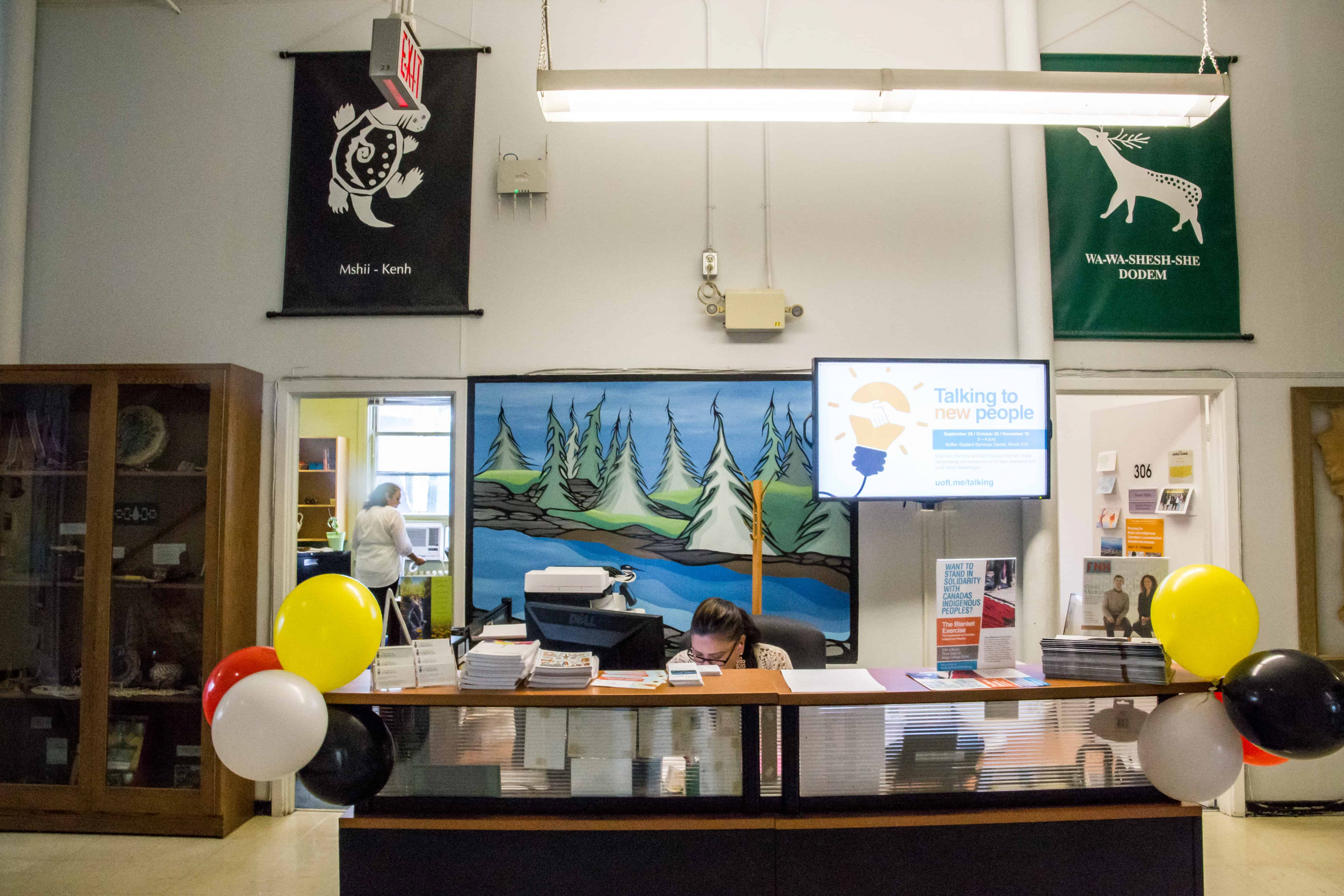In 2016 and 2017, Lakehead University and Trent University each implemented a policy that required all undergraduate students to take at least one 0.5 credit course focusing on Indigenous content before receiving their degree. Laurentian University implemented a requirement for all students completing a Bachelor or Arts and Bachelor of Commerce to also complete at least three credits, equivalent to 0.5 at U of T, of Indigenous content.
Some U of T community members, like Jeffrey Ansloos — an associate professor at the Ontario Institute for Studies in Education (OISE), who is a Canada research chair in Critical Studies in Indigenous Health and a member of the Fisher River Cree Nation — believe that integrating Indigenous-focused program requirements at U of T could be beneficial toward students’ overall education.
Current state of Indigenous course requirements
In 2017, the U of T Truth and Reconciliation Steering Committee released its final report, which called on the university to integrate Indigenous curriculum “throughout all levels and sectors of U of T, ensuring that the content is relevant and sustainable.” In the wake of the report, the U of T administration publicly committed to include significant Indigenous curriculum content in all of its divisions by 2025.
Currently, English students at UTM and the Faculty of Arts and Science must receive at least 0.5 credit in Race, Ethnicity, Diaspora, Indigeneity or 0.5 English credit in Indigenous, Postcolonial, Transnational Literatures, respectively. The university encourages students in Canadian Studies to enroll in at least one out of a list of Indigenous-focused courses.
In an email to The Varsity, Ansloos indicated that he believes the university should expand Indigenous course requirements, particularly for undergraduates. “[The] idea of a required course at the undergraduate level, at this point in Canadian history, makes a lot of sense and is entirely feasible,” he wrote.
OISE has designed Indigenous elective courses and is considering putting some requirements in place. However, Ansloos brought attention to the fact that requiring Indigenous-focused courses “is not a one-stop solution.” He wrote that he does not believe every graduate program should require Indigenous course work. Instead, he believes the university should require graduate students to take Indigenous courses if they seek to enter a sector directly cited in the national Truth and Reconciliation Commissions Report, such as the legal, social, educational, and health-care sectors.
U of T’s response
In September 2019, U of T named Susan Hill, the director of the Centre for Indigenous Studies, and Suzanne Stewart, the director of the Waakebiness-Bryce Institute for Indigenous Health at the Dalla Lana School of Public Health, as academic advisers on Indigenous curricula and Indigenous research, respectively.
In an interview with U of T News, Stewart said that she aimed to prompt researchers to be more conscious of how Canada colonized Indigenous peoples and colonization’s impact in shaping Canada’s society today. Stewart highlighted the privileges colonization has presented to all non-Indigenous Canadians, especially individuals in research positions.
In the same interview, Hill expressed the benefits of educating students about different historical texts through their appropriate lenses and contexts, which Hill believes is crucial to ensuring Indigenous perspectives are considered within courses.
In an interview with The Varsity, Shannon Simpson, senior director of Indigenous initiatives at the Office of Indigenous Initiatives, explained that discussions about implementing an Indigenous course requirement have been ongoing for several years. “It is a bit of a challenge, with all the different departments and divisions and the way that they have degree requirements,” she said.
“Something we have talked about a lot is that there might be more value at U of T to have content built into curriculum instead of requiring a course,” said Simpson. She highlighted that there are pros and cons to mandating courses, the biggest con being that students might see learning about Indigenous peoples as a requirement and receive fewer benefits from the experience.
Indigenous course integration
In May 2022, Françoise Makanda, the senior communications strategist from the Dalla Lana School of Public Health, published an article about integrating Indigenous health into the Public Health & Preventive Medicine Program, which has been in progress for the last three years. The program launched as a pilot in fall 2021.
Dawn Maracle, a Master of Education student from OISE who is Mohawk from Tyendinaga Mohawk Territory, explained that, “Canada is woefully behind” in regard to incorporating Indigenous content into the program curriculum.
Maracle explained that people throughout the U of T community “were fighting” to have an Indigenous course in different programs approximately 30 years ago.
“We should be far ahead of that. There are Indigenous issues to consider in public health as well as in many other topics,” said Maracle.
In 2014, U of T introduced the International and Indigenous Course Module, to allow students to learn about Indigenous history and issues outside of the classroom. In 2017, students visited Hawaii as part of the course module to learn about multiculturalism and decolonization strategies.
Over reading week in November 2022, a group of undergraduate students travelled to the Shingwauk Residential Schools Centre at Algoma University in Sault Ste. Marie, Ontario, as part of the course module. Students listened to the stories of residential school survivors and visited monumental sites from the Shingwauk Residential Schools Centre, including a chapel and graveyard.
“When we learn in the classroom, we have an emotional buffer,” said Lydia Dillenbeck, a first-year social sciences student and member of the University of St. Michael’s College. “We discuss and analyze serious topics without fully realizing their impacts. At Shingwauk, that emotional buffer was stripped away.”
With files from Nawa Tahir.


